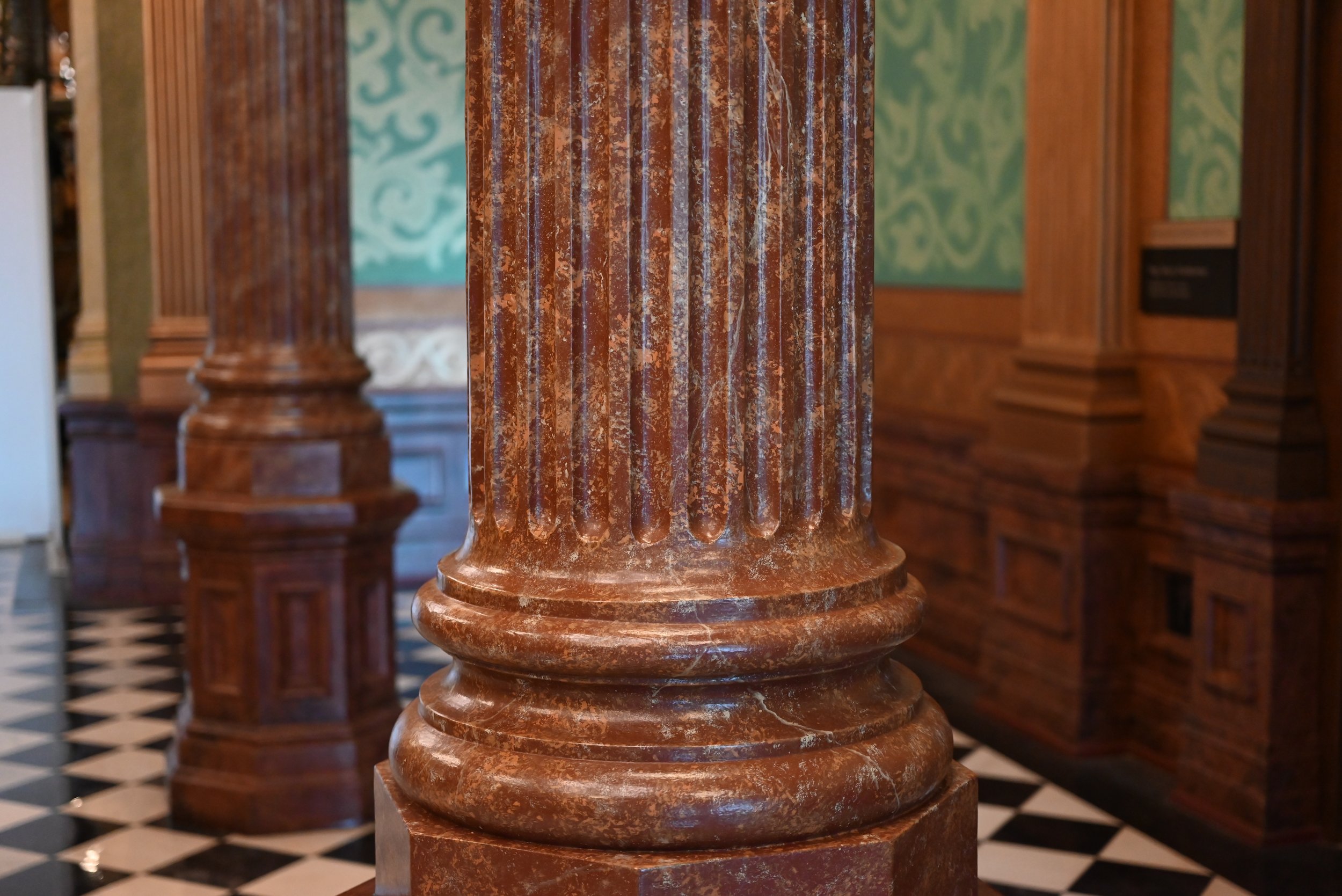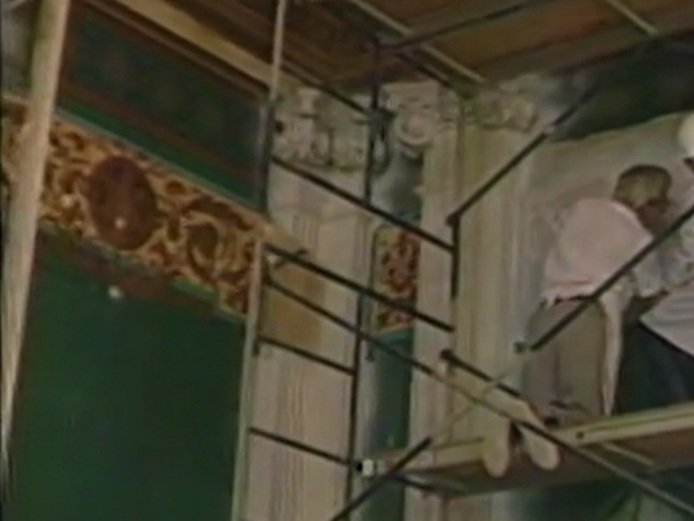Timeless Artistic Techniques
Michigan’s State Capitol is more than a beautiful building. It is a living testament to enduring craftsmanship and artistic techniques that span centuries and tie together cultures. Watch as modern decorative artists recreate our Capitol’s elaborate finishes and motifs in the videos below.
Gilding
Many of the Capitol’s ceilings have real gold included in their decorative schemes, in the form of gold leaf. To create the material, gold is hammered down to be just 4 millionths of an inch thick. The delicate sheets come in a variety of karat weights and are transferred to the design using an adhesive. Using a soft brush, the excess along the edges of the design is carefully brushed away. Gold leaf has also been used to gild many of the portrait frames on display throughout the building and silver leaf, along with gold, are what make the stars shine in the oculus of the dome.
Marbling
The use of faux marble throughout the Capitol helped elevate the building’s interior design without exceeding the allotted budget for its decoration. Large iron columns and wainscotting made of white pine wood were marbled by artists to appear as if made of stone. This process, recreated during the Capitol’s 1987-1992 restoration, requires a base coat, and then added glaze layers to achieve a realistic version of the desired stone being imitated – in our case, red Tennessee marble. Creative tools like feathers, are used to drag lines through the glaze, imitating the veins often found naturally in stone.
Woodgraining
Though the Capitol’s woodwork looks like English walnut, it is actually white pine wood, hand-grained to appear higher quality. Today’s Capitol decorative artists recreate this time-consuming process using a six-step method that begins with priming the pine and adding a warm-toned enamel base coat. They then scrub a mixture of pigments, calcium carbonate and beer – a unique binding medium – onto the pine. Wood pores are created using a flogging brush, and grain textures are added with damp brushes and softeners, then revealed by a soft-haired brush. The wood is glazed, dusted, and sealed with three layers of varnish for protection.
Stenciling
Many of the ornamental designs featured in the Capitol’s decorative paint are repeated, standardized motifs common in Victorian interiors. In lieu of redrawing elements dozens, or even hundreds of times, the Capitol’s painters created stencils. This insured consistent patterns and efficiency, an important consideration for a team of artists responsible for covering nine acres of surface area in paint. During the 1987-1992 restoration, a new team of decorative artists recreated stencils used by the Wright Company in order to bring their painted designs back to life. They make use of a Mahl stick to help support their hand, keep their brush steady, and prevent their palm from touching the wet paint.








